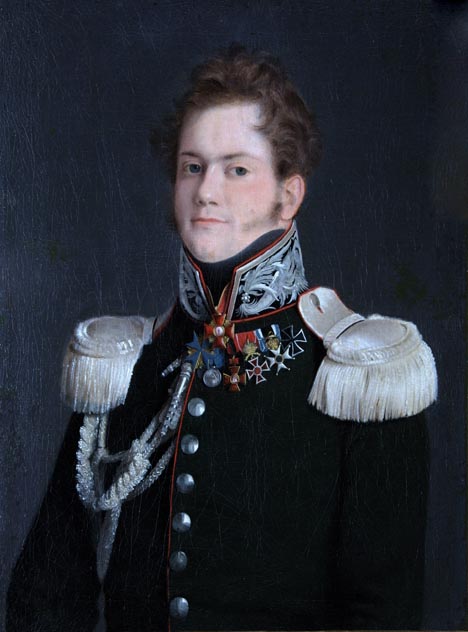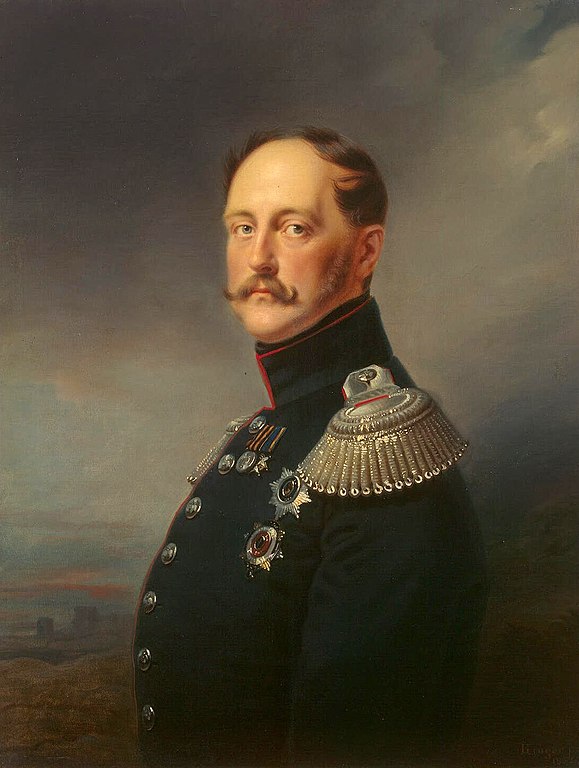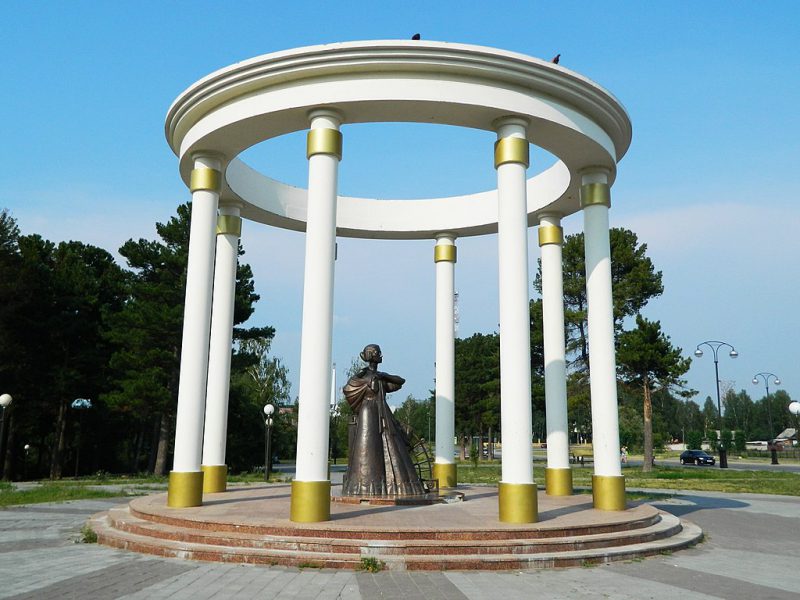Who are the Decembrists and why are their wives so famous?
If you were ever interested in the history of Russia, you have probably heard such words as “Decembrist” or “Decembrist’s wife”. Have you ever wondered why these words appeared in Russian? Who are these people, why are they associated with December and why have their wives gained certain fame? Are you intrigued yet? Let’s figure it out together!

1825: Background story
The year 1825 was one of the turning points for Russia. After the death of Emperor Alexander the First, a large-scale political crisis was about to burst in the Russian Empire.
Alexander the First passed away childless (his daughters all died in childhood), and Alexander’s brother, Konstantin, was to become the new Emperor, according to the law of succession to the throne. However, Konstantin did not see himself as an emperor, moreover, he wanted to have a morganatic marriage with a Polish woman, which did not fit the status of the future emperor at all. In order to prevent unrest, Konstantin nominally ascended the throne, the army and the patriarch swore allegiance to him. At the same time, Konstantin addressed his younger brother Nikolai by letter asking him to become the new Emperor of Russia.
Nicholas, realizing the seriousness and hopelessness of the situation, accepted the abdication of his brother Konstantin, and the army and the patriarch swore an oath again, but this time to Nicholas.
Despite the fact that, technically, these two events did not last long, the feeling of instability and suspense significantly affected the mood of the guards and the army. This was used by the Decembrists.
Who are the Decembrists? Origin of the word
Anti-monarchist movements began to emerge in the Russian Empire way before the Decembrist uprising. These movements were mainly related to the fact that after the triumphal victory over Napoleon, the Russian aristocracy saw that the structure of political and social life could be different. Various philosophical ideas about the limited power of the monarch and social justice added oil to fire. All this led to the creation of the so-called Salvation Union in 1816 in St. Petersburg which aimed to change Russia’s way of life by overthrowing the monarch.
The main ideological inspirer and author of the manifesto was Alexander Muravyov. Later, Sergey Trubetskoy, Nikita Muravyov, Ivan Yakushkin, Pavel Pestel, Peter Kakhovsky, Alexander Yakubovich and others joined the Salvation Union.

The Salvation Union, however, was also not in a simple situation. Not all of its members shared radical views on how the revolution should go. As a result, the internal debate divided the Union into two new societies: Northern (less radical) and Southern. The Northern Society was located in St. Petersburg (led by Nikita Muravyov and Sergey Trubetskoy), and its members began to prepare a coup by campaigning inside the imperial army and recruiting their supporters. The “Northerners” did not want to achieve political change in a radical way: Their transformation program on the formation of a constitutional monarchy, the restriction of the power of the monarch, the creation of a federation of 15 powers, and the separation of branches of power. The Southern Society, the opposite, called for a terrorist act and the assassination of the emperor.
It so happened that at the beginning of the political crisis, part of the guardsmen joined the Southern radical group, which led to the dramatical events that rolled out in December 1825. From there on, the participants of those events on the revolutionary side of them started being called the Decembrists.
December 14, 1825
December 14, 1825, according to the documents of historians, was a gloomy and cloudy day. The nervousness and tension among the rebels was so high, that in the morning, even before the dramatic events started, a discord occurred in their ranks. First, Peter Kakhovsky refused to fulfill the plan that had been thought out in advance: He refused to enter the Winter Palace and kill Emperor Nicholas I. Then Alexander Yakubovich refused to lead the guards and sailors to storm the Winter Palace. A few hours later, other Decembrist officers brought about 2,500 guardsmen to the Senate Square.
Unlike his older brother Alexander, who regularly received reports on the mood within the army and the population, Nicholas I did not possess such information and had no idea about the existing secret society, so when he received a report that the guardsmen had occupied the Senate Square, he was in total shock. However, having gathered all the courage and will, Nikolai managed to stop the Decembrists. Imperial guardsmen – the number of which exceeded the number of revolutionaries – came out against the army of rebels. After the shootings and chaos, the uprising was suppressed by the end of the same day, and the instigators and participants in the uprising were arrested.

The trial of the Decembrists
The trial of the Decembrists had an unprecedented character in Imperial Russia. The process was personally led by Emperor Nicholas I, who was even choosing the purpose and measure of punishment. In the summer of 1826, the verdicts were delivered to the 5 “main” Decembrists: Pavel Pestel, Kondraty Ryleev, Sergey Muravyov-Apostol, Mikhail Bestuzhev-Ryumin and Peter Kakhovsky were executed. Other participants in the uprising were sentenced to other measures of punishment.
One of the manifestations of “imperial anger” was the exile to Siberia. The Siberia of the 19th century was an endless, disordered space where a man finds himself in a constant struggle with the elements in order to simply survive. Of course, Siberia at that time was already under development, as towns and villages were being built, but all this was done by the hands of exiles, convicts and criminals. That was the community in which the Decembrists — former nobles and aristocrats — found themselves.
Before sending the Decembrists into exile, Nicholas I deprived the rebels of all officer ranks and awards, the nobility and privileges, as well as the right to return to large cities. This severe measure extended not only to the Decembrists themselves, but also to their children and grandchildren. However, the wives of the convicts were not subjected to this measure: they came from other noble families, and therefore could not be deprived of aristocratic descent. And while the Decembrists was quite a phenomenon for Imperial Russia, then their wives were totally another one.
Having learned about the sentences, the wives did not abandon their husbands. On the contrary, women courageously and steadfastly followed their husbands to Siberia, overcoming all adversities. Emperor Nicholas I was in shock after he received a petition from the wives of the Decembrists for reunion with their husbands. His office tried to dissuade women from this crazy idea, but they persistently insisted.
Then the wives of the Decembrists were also deprived all the nobility. They were even banned from correspondence with their families. It was hard to take for all of them, but the women irresistibly followed their husbands, leaving a comfortable and calm life behind, approaching the unknown, and demonstrating their boundless affection, loyalty and love for their husbands.

Decembrists in the movies
In 1975, on the 150th anniversary of the Decembrist uprising in the USSR, the film “The Star of Fascinating Happiness” was released on those events. For the most part, the film was dedicated to the heroic deeds of the Decembrists’ wives who followed their husbands in exile.
For those of you who would like to see this movie, you can find it on YouTube (in Russian) or below:
Conclusion
Even 194 years after, the Decembrists are invisibly present in the life of modern Russians. When you walk around St. Petersburg, you can see their names of the streets: Yakubovich Street, Pestel Street, Ryleyev Street… Probably, almost every Russian man walking along these streets at least once dreamed of meeting his Decembrist girl – a woman who will always stand by him and follow him no matter what.

Culturologist, professor of Russian as a foreign language and promoter of Russian culture.
Aleksandra gives Russian lessons via Skype.






